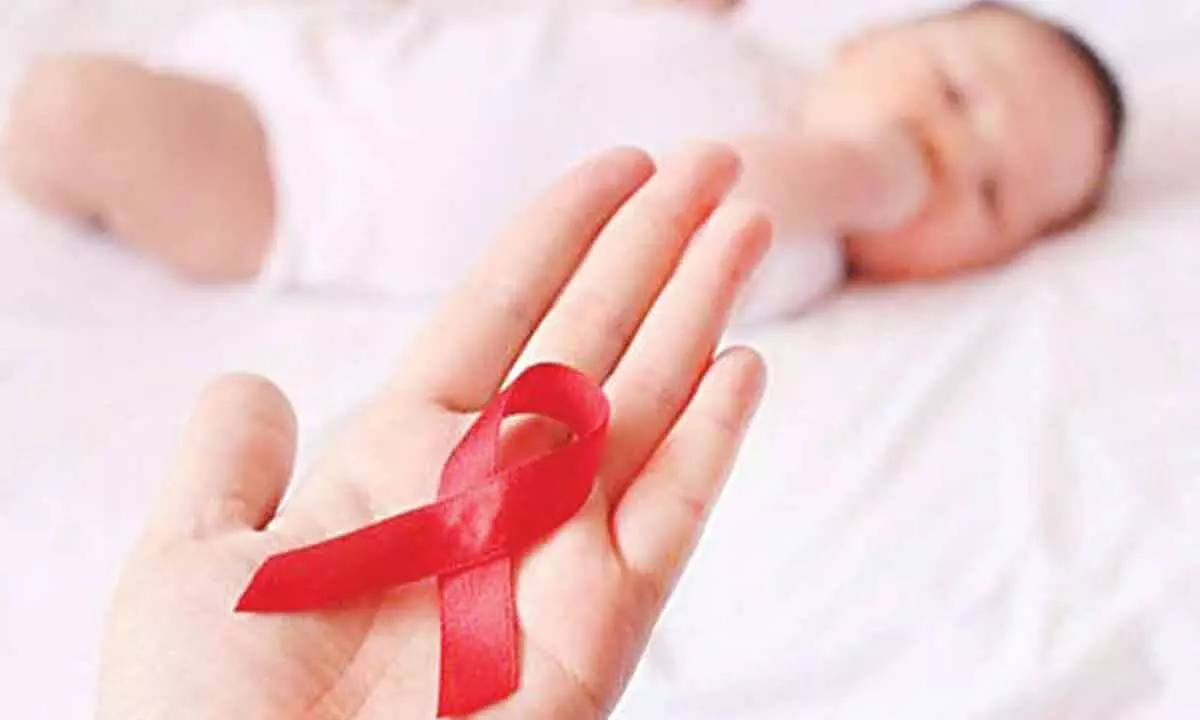Live
- Tirumala Srivari Kalyanaratham Depart for Prayagraj Kumbh Mela
- Realme 14 Pro Series Launching on January 16 in India: Details
- US extends condolences to those affected by quake in Tibet
- Drink coffee during morning hours to get good heart health
- Farmers urge CM to focus on projects
- IAF Chief Raises Alarm Over Militarisation At India's Borders Amid China's Rapid Advancements
- 23 BC hostel students suffer food poisoning
- Yuva Kabaddi Series: Aravalli Arrows beat Palani Tuskers; Murthal Magnets get first win in Division 1
- Thailand receives over 35.5 million foreign tourists in 2024
- Why BJP hasn’t taken action against Bidhuri, asks Bhatti
Just In
Preventing Mother-to-Child HIV Transmission: Strategies and Importance


World AIDS Day, observed on December 1, serves as a crucial reminder of the ongoing efforts to combat HIV/AIDS and highlights the progress made in preventing MTCT through awareness, education, and medical interventions
Mother-to-child transmission (MTCT) of HIV, also known as vertical transmission, occurs when the human immunodeficiency virus (HIV) is transmitted from an HIV-positive mother to her child during pregnancy, childbirth, or breastfeeding. This form of transmission has been a significant concern, especially in regions with high rates of HIV. However, advancements in medical science and comprehensive prevention strategies have dramatically reduced the incidence of MTCT, offering hope for eradicating the transmission of HIV from mother to child.
Overview of Mother-to-Child HIV Transmission
HIV can be transmitted to a child during pregnancy through the placenta, during labor and delivery as the baby passes through the birth canal, or through breastfeeding. The risk of transmission can be as high as 25-45% when intervened. However, with appropriate medical care, the risk of transmission can be reduced to below 1%. This dramatic reduction in transmission rates has been made possible through the use of antiretroviral therapy (ART), proper care during childbirth, and safer feeding practices.
Key Strategies for Preventing MTCT
1. Early HIV Diagnosis in Pregnant Women One of the most important steps in preventing MTCT is the early identification of HIV in pregnant women. Routine HIV screening during prenatal care is essential. If a woman is diagnosed with HIV early, she can begin treatment with antiretroviral therapy (ART) to reduce the viral load and minimize the risk of transmission. Early diagnosis allows for early interventions to reduce the chances of vertical transmission during pregnancy, labor, and delivery.
2. Antiretroviral Therapy (ART) Antiretroviral therapy is the cornerstone of preventing mother-to-child transmission. For HIV-positive pregnant women, ART can reduce the viral load to undetectable levels, significantly decreasing the likelihood of transmitting the virus to the baby. ART should be initiated as early as possible during pregnancy. In many cases, lifelong ART is recommended for the mother to maintain her health and prevent the virus from being transmitted to her child.
3. Safe Delivery Practices TheMode of delivery plays a crucial role in preventing transmission during labor. In cases where the mother has an undetectable viral load or is on ART, a vaginal birth can be safely performed. However, in cases where the mother has a high viral load, a cesarean section (C-section) may be recommended to reduce the risk of the child coming into contact with the virus during delivery. Cesarean sections are typically recommended for HIV-positive mothers who have not achieved viral suppression by the time of labor.
4. Avoiding Breastfeeding Breastfeeding is a known route of HIV transmission. In areas where clean water and safe infant formula are accessible, HIV-positive mothers are often advised to avoid breastfeeding. In these cases, formula feeding is recommended to prevent the child from contracting HIV through breast milk. In resource-limited settings, where formula feeding may not be an option, exclusive breastfeeding combined with ART for the mother can reduce the risk of transmission through breast milk. In some cases, HIV-negative mothers may also be advised to avoid breastfeeding to ensure the child’s safety.
5. Postnatal HIV Care for the Child After birth, the baby may be given antiretroviral medication for several weeks to prevent infection, especially if the mother was not on ART during pregnancy or had a detectable viral load at the time of delivery. The infant will also be monitored for HIV exposure through early testing, which helps identify any cases of infection as soon as possible. If the child is diagnosed with HIV, early initiation of ART is critical to prevent progression to AIDS and ensure optimal health.
Conclusion
Preventing mother-to-child HIV transmission has seen remarkable progress over the past few decades, primarily due to advancements in medical treatment, early diagnosis, and comprehensive care strategies. Antiretroviral therapy has been pivotal in reducing the transmission rates, and with appropriate interventions during pregnancy, childbirth, and breastfeeding, the risk of vertical transmission can be reduced to near zero.
Despite these advancements, challenges remain, particularly in low-resource settings, where access to healthcare, medication, and safe feeding options may be limited. Nonetheless, through continued education, access to ART, and community support, the goal of eliminating mother-to-child HIV transmission is within reach, paving the way for a future where HIV-free births are the norm.
(The writer is a Consultant - Infectious Disease & Travel Medicine, Aster CMI Hospital, Bangalore)

© 2024 Hyderabad Media House Limited/The Hans India. All rights reserved. Powered by hocalwire.com






